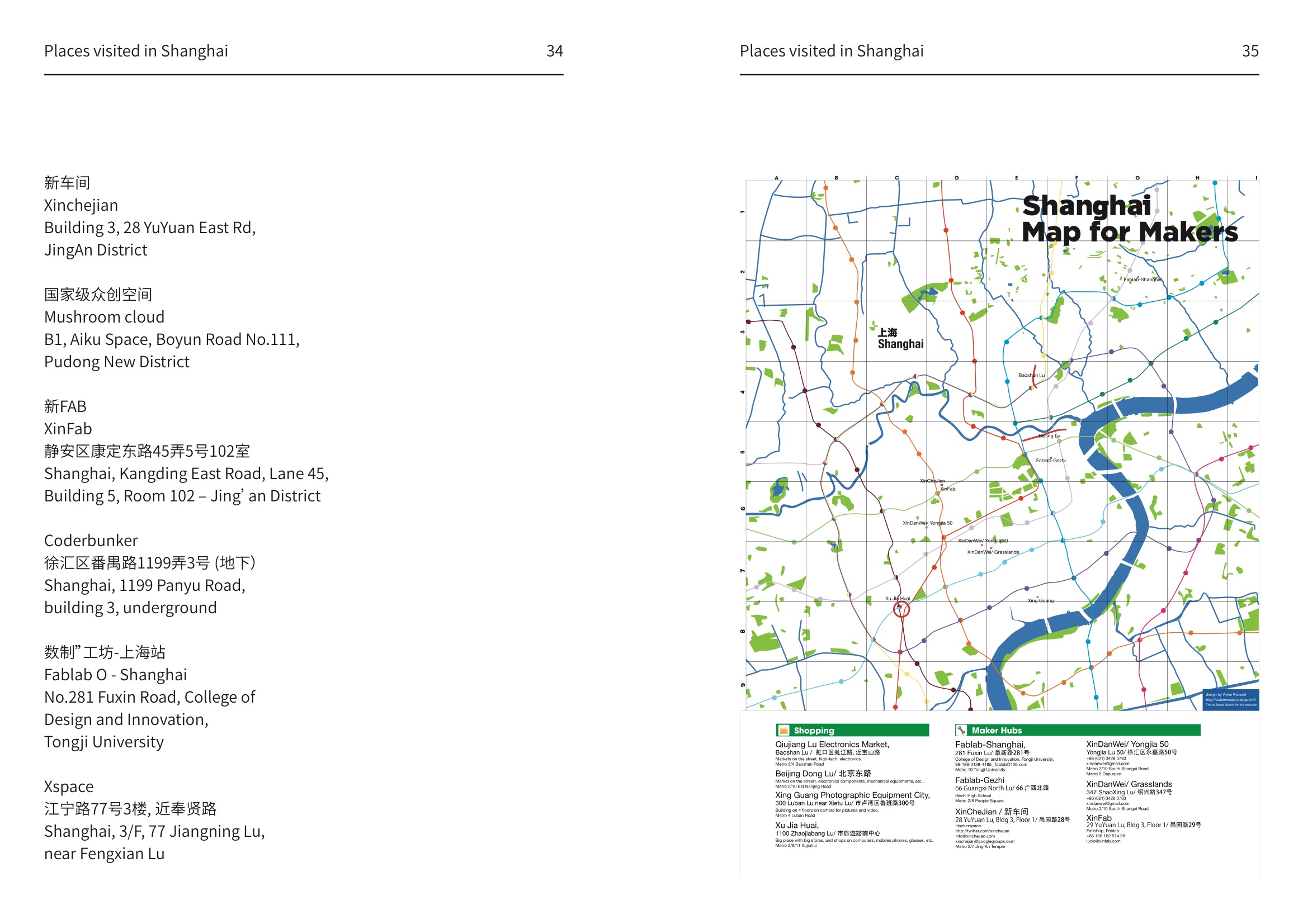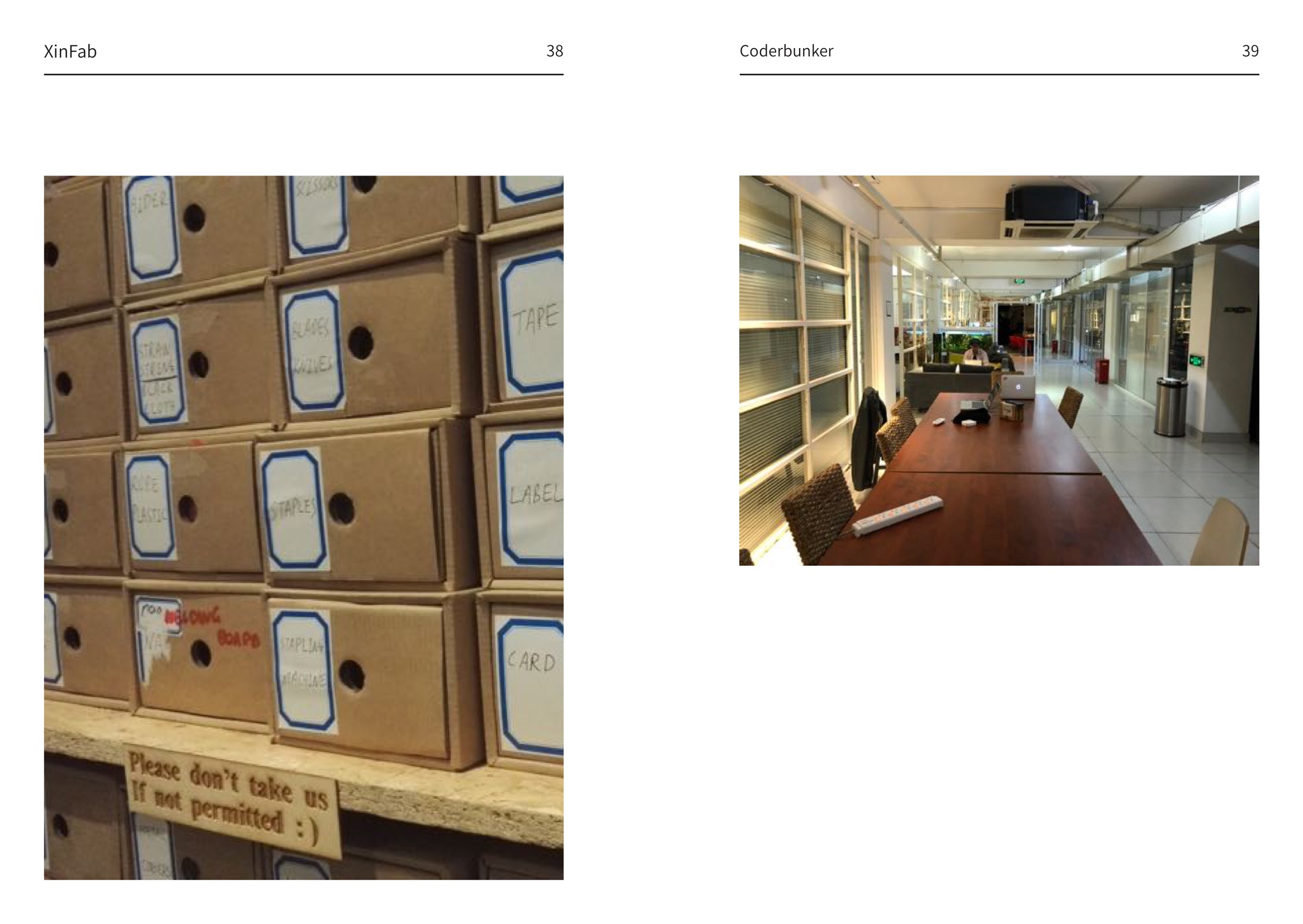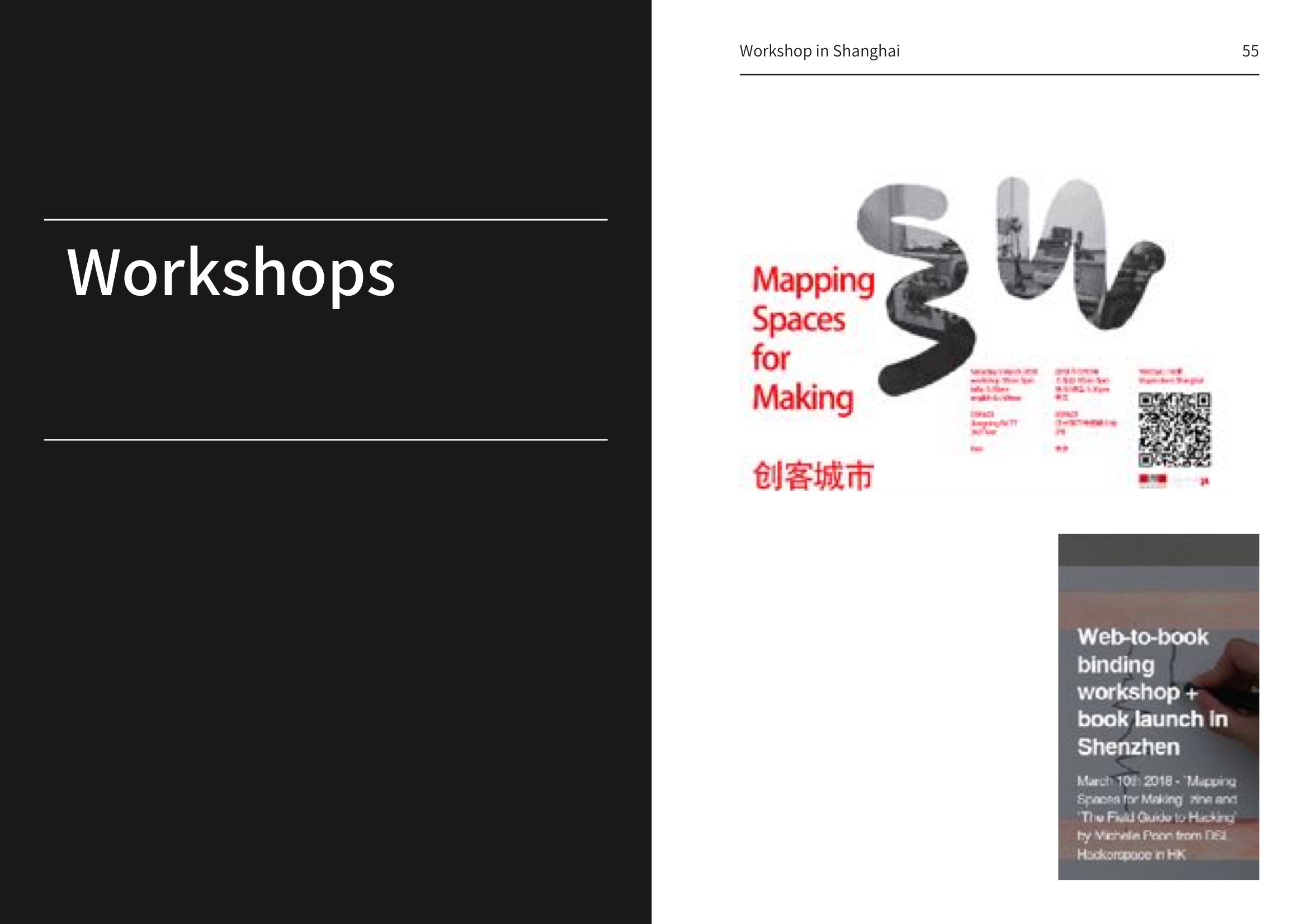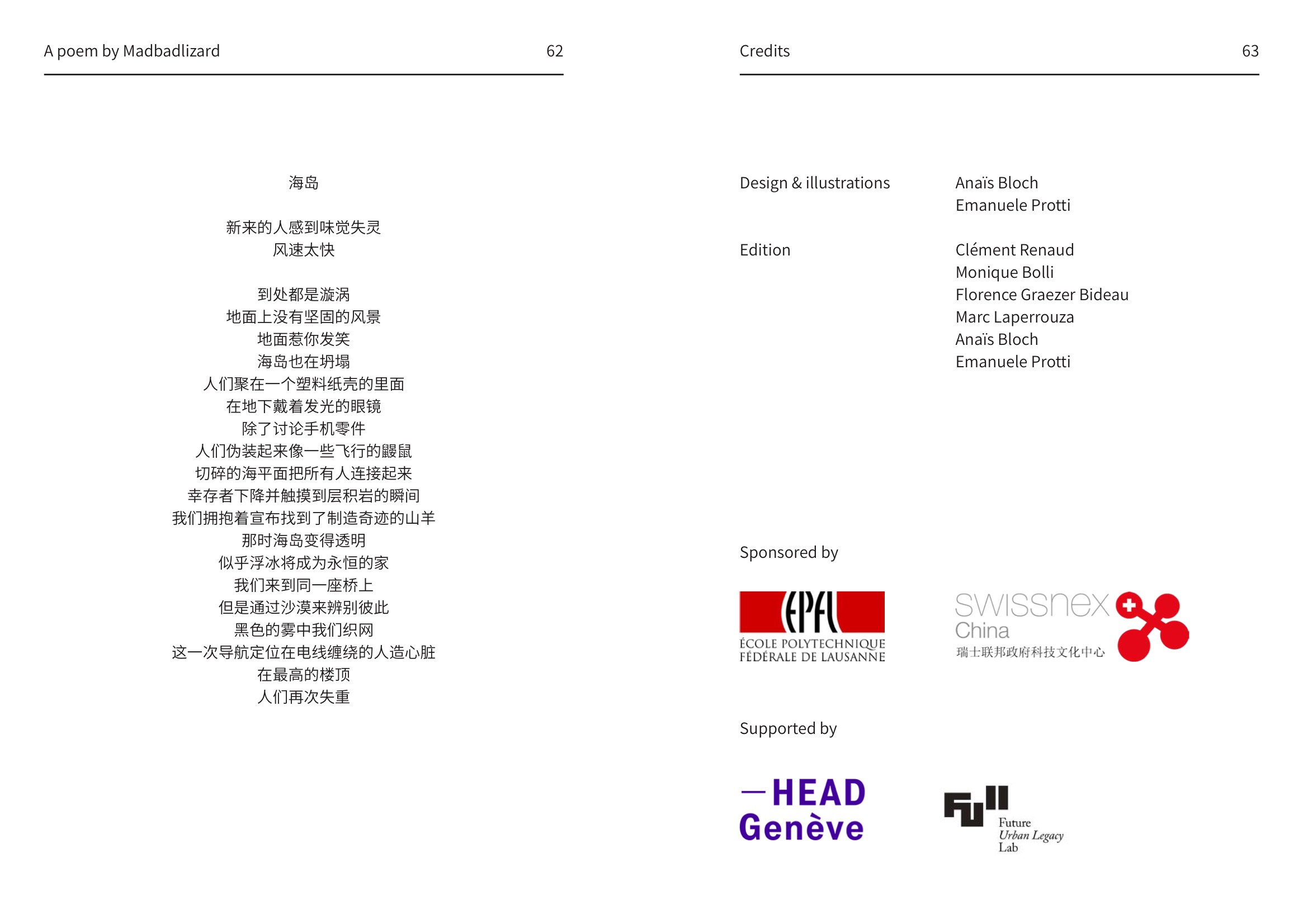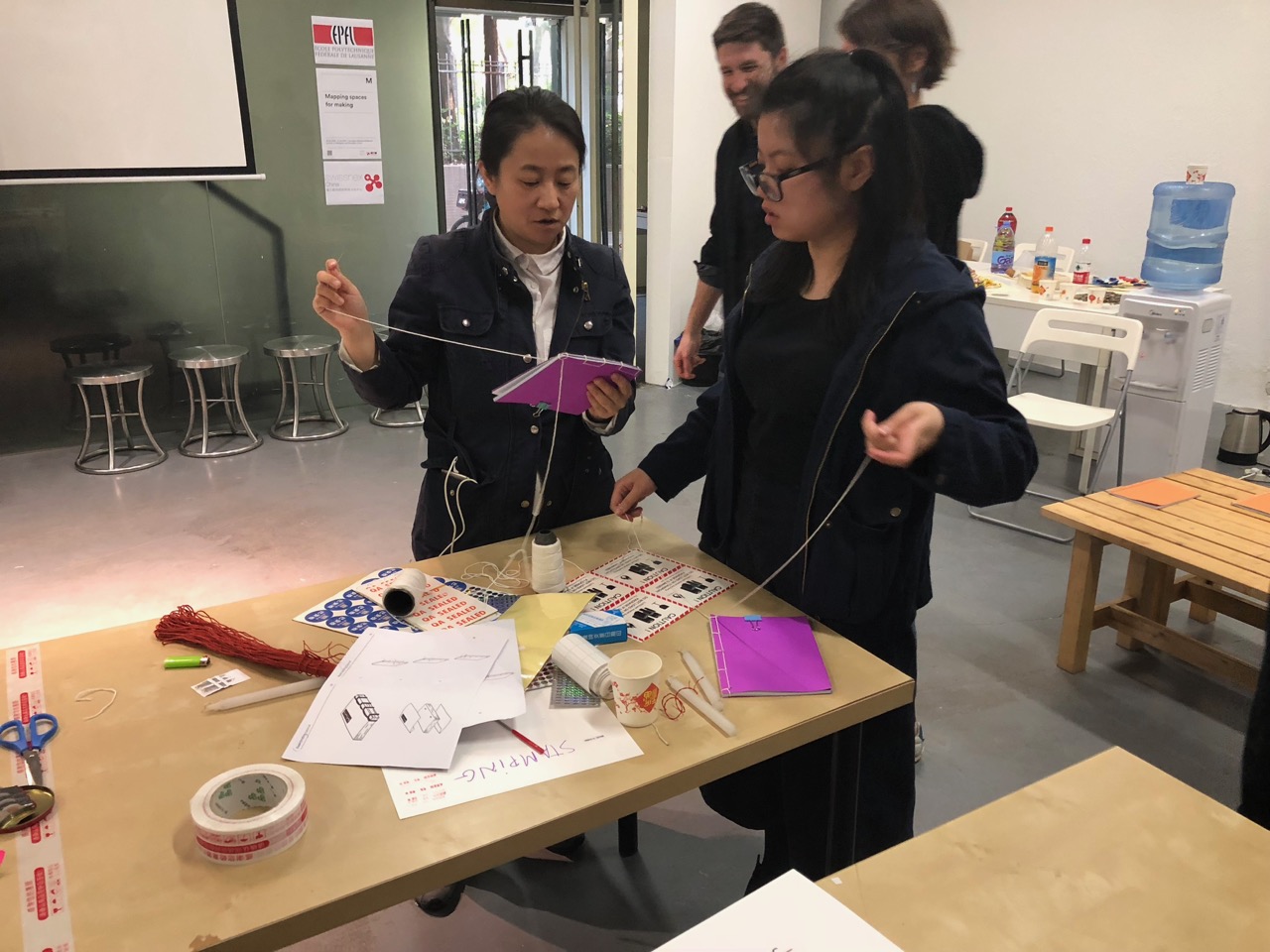Report : investigation, teamwork, events and making a book in 10 days
Ten days of intense fieldwork, visits and interviews of the MapMakers project ended with the production of a small booklet during the final event in Shenzhen. The following article gives a brief overview of this research trip and some of the early takeaways.
The fieldwork
During the Mapping Spaces for Making workshop, we wanted to re-collect how different spaces that have been instrumental in the unfolding of maker communities in Shanghai and Shenzhen - and how they have been transforming over the years. During 10 days, a research team of 4 to 6 people have been collecting pictures, drawings, maps, data and recordings during visits into these different spaces.

Dessins par Anaïs Bloch
The research team was made of :
- Clément Renaud, geographer and computer scientist at EPFL
- Monique Bolli, phD student in social anthropology at EPFL
- Anais Bloch, product designer and researcher at HEAD Geneva
- Emanuele Protti, phD student in architecture and design at Politecnico di Torino
- Florence Graezer Bideau, anthropologist at EPFL
- Marc Laperrouza, economist at EPFL
We spent 5 days in each city : 4 days of investigation and 1 day dedicated to public restitution. Altogether, we visited a dozen of spaces from the smallest fablab to the largest electronic retail cluster on earth. We collected lots of different information that will be subject to publication under different forms (online blogging, scientific articles, book, etc) in the coming months.
Making the prototype of a book
“Learning-by-doing” is one of the foundational pillar of discourses and practices in maker communities. Indeed, what better learning process than doing things yourself? Tim Ingold in his book Making shows the importance of experiencing the gestures to understand better how things are made.
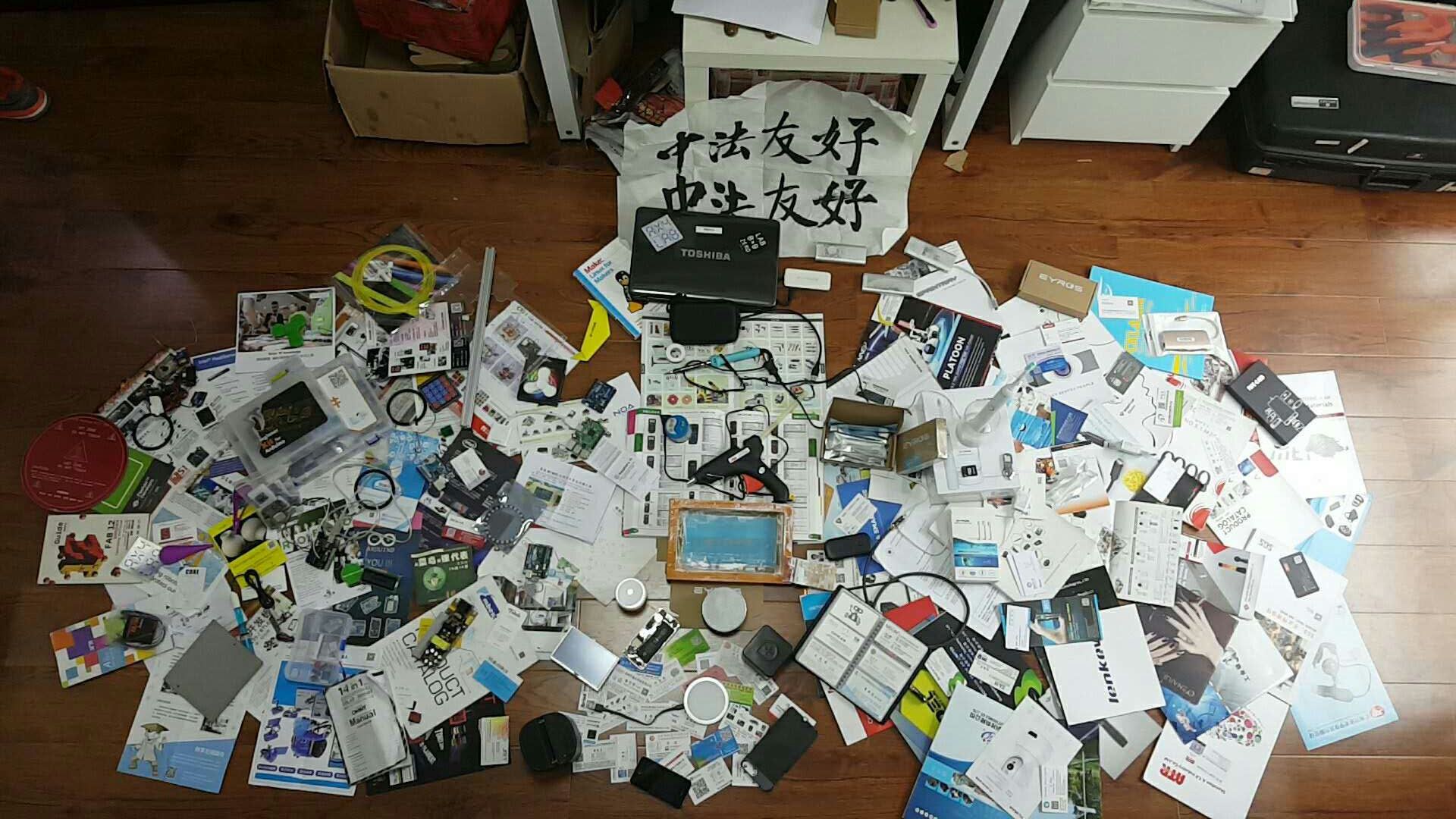
Five years around in Guangdong - object mapping by Laurent.
As our goal was to learn about how things are made in China, we decided that we should make something. As researchers, our main work concerns books. Therefore, we decided to make a book - well, a zine - in the short span of time of our investigation. One of the goal was to understand and provide a clear example of the legendary Shenzhen speed, in the city were products usually rise and fall in a matter of days.
Words changing in meaning and use, places disappearing or moving, people leaving or arriving… one of the great challenge for researchers in China is the velocity of changes. To understand better the incredible pace of things here, we inflicted an ambitious time constraint on ourselves by setting the goal of making a book in a few days. After 8 days of fieldwork, we spent a day selecting materials, defining a plan and producing a booklet. It was a late night on inDesign, as you may imagine.
We did not aim at having a fully written analysis. Scientific writing takes time. Our goal was to capture the raw energy that drives things in Shenzhen by putting together a first prototype of a book that will continue to evolve as this research goes on. Next steps will be dedicated to the exploration of materials we collected during this session and preceding fieldwork before that.
For this very first version of the proto-book, we decided to just present raw elements of methodology we used. This book, still to come, is in-the-making. Here is a first preview.
You can find a digital copy in PDF here.
The workshops
As part of the research process, we paid specific attention to our intentions and interactions with the different people we meet. During fieldwork, researchers usually come, extract and leave. Most research results never make it back to the people that are interrogated. For that reason, we decided it was important to organize a session locally to present the early results of the projects and share back some of our personal work. It was also a great moment to confront our research with participants and gather additional feedbacks.
The workshops were successfully held in Shanghai XSpace on March 3rd and Shenzhen Design Center on March 10th, with more than 50 people altogether attending the sessions.
at xSpace in Shanghai
In Shanghai, we had very interesting exchanges about making with both newcomers, space owners, government representatives and experts of the topic. During the day, we divided the place into several spaces for mapping, editing, drawing and writing. Each part of the space had different activities, leading to numerous discussions about the present, past and future of spaces for making in the city of Shanghai.
The evening started with an introduction of the project by the organizers, followed by presentations of the works of Swiss designer Anaïs Bloch and Italian architect Emmanuele Protti (more details in the announcemcent). The day ended with food and drinks - as well as more interesting discussions about making in Shanghai.

Many thanks to xSpace for the space and the support before and during the event.
at the Center for Design and Architecture in Shenzhen
The topic of this workshop was Web-to-Book Binding. After 10 days of intense work investigating and compiling documentation, the last step to release our proto-book was to print and bind it.
At 10am, half of our team members went to the print shop to produce the 300 color copies that would later constitute a book. Another half went to the event venue and started to acquire all materials required to bind the book: tools, cover, stamps, wire, etc. Participants from many different backgrounds started to arrive around 2pm: high-school students, scholars, architects, hardware designers, NGO members, etc. After introducing ourselves and getting to know each other a bit, we moved past presentations to start the real work: make the book!

Most handcraft workshops require each participant to do her/his own book, following a step-by-step procedure described in a tutorial or by a teacher. For this one, we wanted to do something different by asking the question: how do we learn as a group? To bind the book, we had selected a Chinese traditional technique of book sewing that required several complex manipulation. Despite having instructions, few of us had ever done any book binding and we wanted everyone to get back home with their own copy of the book.
Instead of having each person to make their own booklet from zero to end, we divided the work in tasks: assembling the pages, drilling holes, cutting the cover, measuring rope, sewing the pages – and of course a constant quality control to improve the process as the product was progressing through different stages. Each task was separated on a different table, forming a small assembly line where everyone could change role at anytime. In less than 2 hours, we made 31 books with lots of dedication, mistakes, and laughters. Some participants experimented for the first time sewing, hammering - and for all of us how to make books as a group.

The evening session was dedicated to more discussions and further presentation of the context of this research project. Michelle Poon from Hong Kong’s hackerspace Dim Sum Labs gave us an account of her new book The Field Guide To Hacking that compiles many tutorials and texts from local makers in the Pearl River Delta. We ended the day with food and drinks prepared by OIL.
The whole day was hosted graciously by the Shenzhen Center for Urban Design and Architecture. Thank you!
A book to come
Beyond our small group, involving more participants in this research though events and focusing on making this booklet was a fascinating experience. It brought a diversity of opinions and problems that provided a large amount of empirical learning. The focus on real-time action allowed us to get a grasp on the fast-changing context, and on how spatial and urban resources intervene when pressure is building up as product delivery gets closer.
One of the most important tool in the whole process was without a doubt WeChat. The messaging (and much more) app constituted the backbone for our daily discussions within and without the team. We built different chat groups for internal discussions, specific events, coordination, etc. All of them fulfilled different functions and turned out to be quite different in organisation and contents.
The production of this first book draft was an intense experience, with lots of learning that still have to be processed. During the next months, we will continue building upon what we started - stay tuned!
Thanks to our local partners and to Swissnex China for their support

















